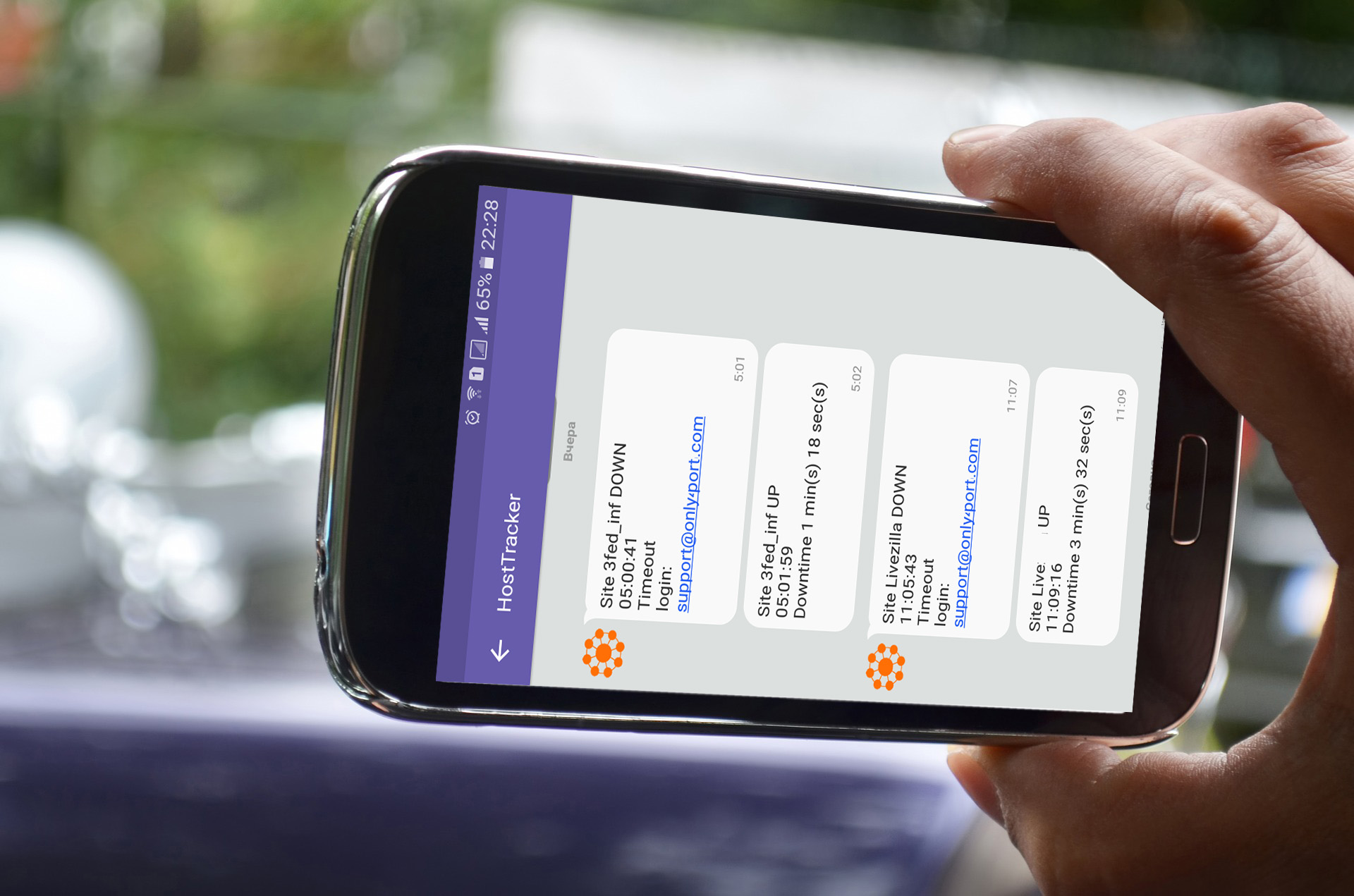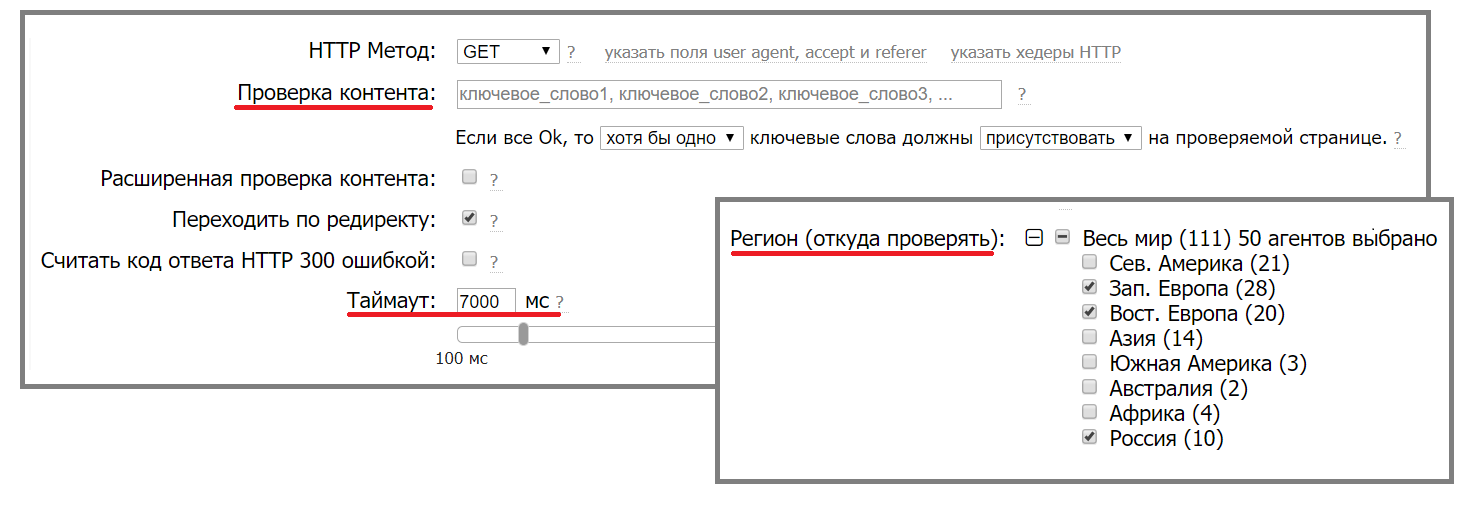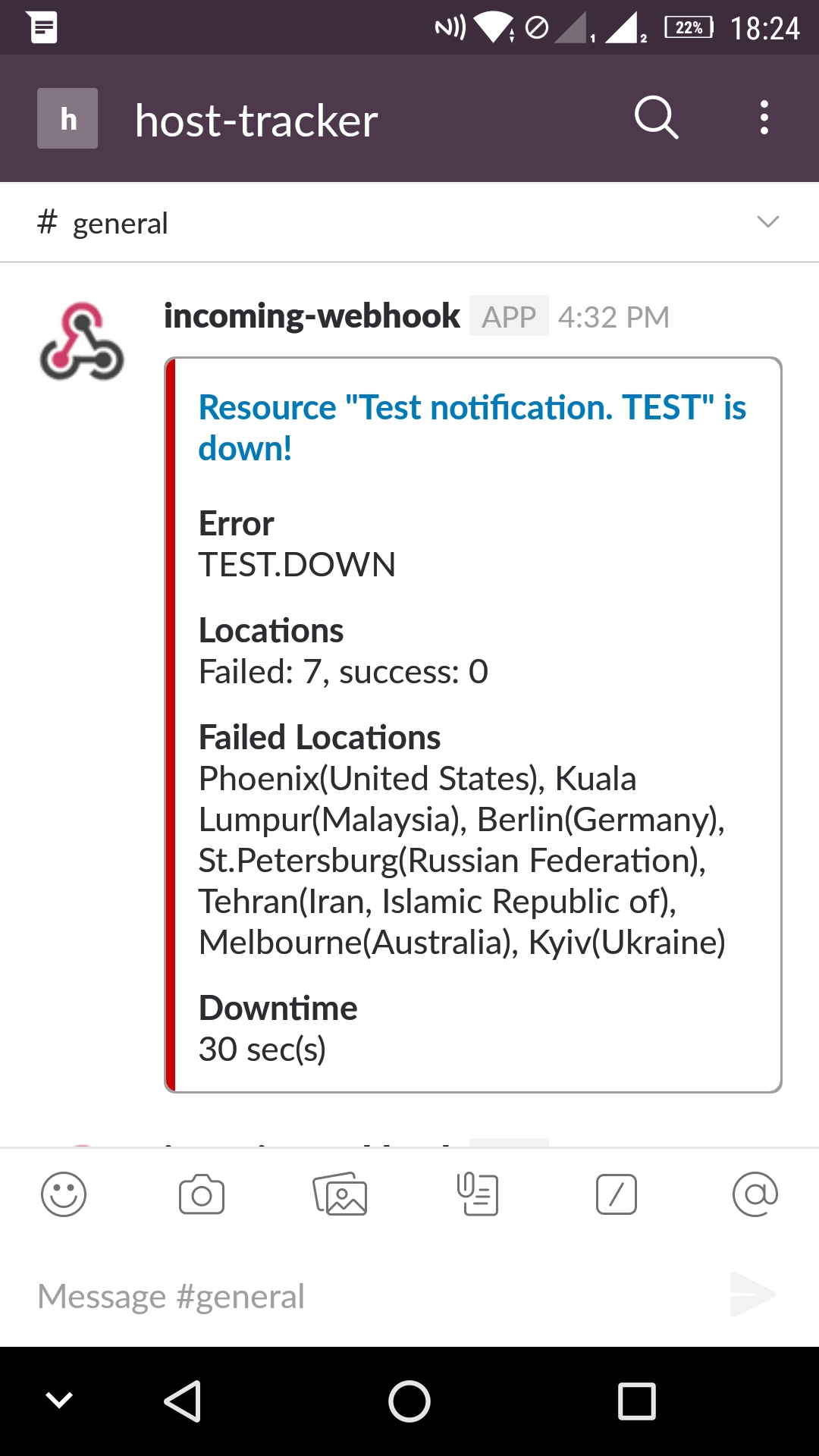How to set up various notifications about problems with the site
Probably, everyone faced with the signs “Gone 10 minutes”, “I will be soon” or, even worse, “Recount” on the doors of various institutions. One can imagine how much profit the owners of such a business have received because of the notorious human factor. But counting is difficult. In the network, to the commonplace human desire not to work is added, and things are more interesting. And to estimate losses is a task feasible for automation. What are these losses and how to avoid them? How to notice a problem with an important site in time and stop losing visitors? The answers to these questions in this publication are provided by the HostTracker website monitoring service .

On why it is important, in commercial terms, to avoid downtime in the work of sites, there is a lot of research . In short, with new customers, everything is clear. The site does not work - they go to the next, that is, to competitors. But even loyal customers leave pretty quickly if the site is not working or inconveniences arise in its use (for example, a long page load). Sites, as well as our involvement in them, are different. Conditionally, you can divide them into "should work !!!", and "I wonder how he is there."
')
The first category is, as a rule, commercial sites of which you are the owner or responsible employee. Sales or advertisements in exchange for providing any information are greatly reduced if the site begins to slow down. In addition, if the errors are repeated regularly - the site begins to subside noticeably in the search results. Trouble For such sites, third-party monitoring is highly recommended, preferably with 24x7 instant notification. Alerts - via SMS or even a voice call to wake up exactly.
In particular, it is desirable to monitor the "brakes" of the site - to check the response time, which may indicate a starting problem, for example, DDoS . In any case, a noticeable decline in response time significantly reduces the comfort in working with the site. Therefore, we recommend setting a critical threshold of 5-7 seconds, depending on the site. (The normal time is 1-3 seconds). You can also select a verification region - the one in which the target audience of the site is located - in order not to litter the logs with significantly longer results from distant continents.

Another option is to check the content, i.e. keywords. For there are cases when the site is working, but the server with the media or the database is not. However, the base can also be checked .
And the last tip - for many sites it makes sense to check different pages, it is also possible to use different verification protocols. It happens that everything is good with the main one, but it is no longer possible to log in or open a category without problems. Such cases are especially dangerous, as they are not immediately noticed, but only for some statistics or analytics: few registrations, the time spent on the site drops ... in short, in the end it all comes down to the question "where did the money go?"
... but waking up for it is not ready. For this purpose it may be enough even free notifications, for example, e-mail, Hangouts, Skype. At the request of many developers, the service was also integrated with Telegram and Slack, popular in the command environment ( here , how to configure).

From the advanced settings, you can select the alert delay, so as not to worry about each sneeze, and learn only about serious problems.
In the near future is also the introduction of a messenger from Facebook, which is also very popular in many countries. If in the comments someone expresses on the demand - we will be grateful. As for any other comments and suggestions.

On why it is important, in commercial terms, to avoid downtime in the work of sites, there is a lot of research . In short, with new customers, everything is clear. The site does not work - they go to the next, that is, to competitors. But even loyal customers leave pretty quickly if the site is not working or inconveniences arise in its use (for example, a long page load). Sites, as well as our involvement in them, are different. Conditionally, you can divide them into "should work !!!", and "I wonder how he is there."
')
If the game is worth the candle
The first category is, as a rule, commercial sites of which you are the owner or responsible employee. Sales or advertisements in exchange for providing any information are greatly reduced if the site begins to slow down. In addition, if the errors are repeated regularly - the site begins to subside noticeably in the search results. Trouble For such sites, third-party monitoring is highly recommended, preferably with 24x7 instant notification. Alerts - via SMS or even a voice call to wake up exactly.
In particular, it is desirable to monitor the "brakes" of the site - to check the response time, which may indicate a starting problem, for example, DDoS . In any case, a noticeable decline in response time significantly reduces the comfort in working with the site. Therefore, we recommend setting a critical threshold of 5-7 seconds, depending on the site. (The normal time is 1-3 seconds). You can also select a verification region - the one in which the target audience of the site is located - in order not to litter the logs with significantly longer results from distant continents.

Another option is to check the content, i.e. keywords. For there are cases when the site is working, but the server with the media or the database is not. However, the base can also be checked .
And the last tip - for many sites it makes sense to check different pages, it is also possible to use different verification protocols. It happens that everything is good with the main one, but it is no longer possible to log in or open a category without problems. Such cases are especially dangerous, as they are not immediately noticed, but only for some statistics or analytics: few registrations, the time spent on the site drops ... in short, in the end it all comes down to the question "where did the money go?"
When you want to know about the problem among the first
... but waking up for it is not ready. For this purpose it may be enough even free notifications, for example, e-mail, Hangouts, Skype. At the request of many developers, the service was also integrated with Telegram and Slack, popular in the command environment ( here , how to configure).

From the advanced settings, you can select the alert delay, so as not to worry about each sneeze, and learn only about serious problems.
What else is needed?
In the near future is also the introduction of a messenger from Facebook, which is also very popular in many countries. If in the comments someone expresses on the demand - we will be grateful. As for any other comments and suggestions.
Source: https://habr.com/ru/post/353316/
All Articles